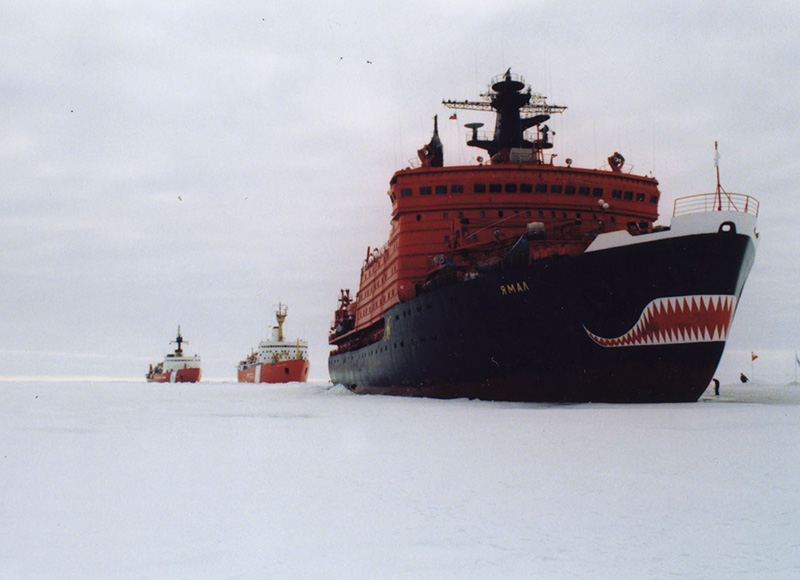The U.S. trails Russia and China in recognizing the strategic importance of the Arctic for commerce and security, experts warn Congress.
The two rival powers “view the Arctic over the next half century. We view it in the next budget cycle,” Heather A. Conley, senior vice president for Europe, Eurasia, and the Arctic with the Center for Strategic and International Studies, said at a House Subcommittee on Coast Guard and Maritime Transportation hearing last week.
Conley was one of six panelists who delivered a somber assessment of this country’s role in the vital region termed America’s Fourth Coast. “If the United States is incorrect about the Arctic, we will be placed at a great strategic disadvantage with deleterious military implications for the North Atlantic and North Pacific,” she said.
Even with a new heavy icebreaker on the horizon for the Coast Guard, the U.S. still lacks equipment, charts and infrastructure to deal with rapidly increasing activity in the Arctic and with Russia’s and China’s designs on the area, the experts said.
China, for example, is looking for an eastern terminus for a transpolar route, said David Titley, a retired Navy rear admiral who teaches meteorology at Penn State University.
“Just like 9/11, we have a failure of imagination,” said Titley. “They’re looking at how to connect the Pacific and Atlantic over the top.”
Meanwhile less than 5% of the U.S. maritime Arctic has been surveyed to modern international navigation standards, said David Kennedy, senior Arctic advisor for the National Oceanic and Atmospheric Administration. “The scale of the hydrographic survey requirement in Alaska and the Arctic is vast, with 426,000-square-nautical miles within the U.S. Exclusive Economic Zone and nearly half of that significant to navigation.”
The reality is, “we’re not alone up there,” said Coast Guard vice commandant Adm. Charles Ray.
Committee chairman Rep. Duncan Hunter, R-Calif., noted that the Arctic is becoming navigable for large portions of each year, and vessel transits through the Bering Strait rose nearly 200% from 2008 to 2017. Infrastructure and operational challenges include limited satellite coverage and lack of a port capable of handling ships with a draft up to 35'.
“You all agree, the Arctic’s opening rapidly. Now that we’re getting the boats, we need the strategy to go with the boats,” Hunter said. “The Arctic isn’t mentioned in the National Defense Strategy at all. It seems really myopic and shortsighted.”
What’s more, said Rep. John Garamendi, D-Calif., “the Navy has no interest ... The Navy simply has abandoned the Arctic Ocean other than submarines.” The federal government in general “has been far too complacent if not negligent in establishing a solid foothold” in the region.
The committee is ready to develop an Arctic strategy, he said.
The Coast Guard and Navy in March issued a request for proposals (RFP) for the advance procurement and detail design for the Coast Guard’s heavy polar icebreaker, with options for the design and construction of up to three more.
The Coast Guard says it needs at least three new heavy icebreakers to ensure continued access to both polar regions and to support the nation’s economic, commercial, maritime and national security needs.
The polar icebreaking fleet now includes the heavy icebreaker, the aging and ailing 399’ Polar Star, commissioned in 1976, and the 420’ medium icebreaker, the Healy, commissioned in 2000. Polar Star’s deactivated sister ship, Polar Sea, is a parts donor, tied up in Seattle.
Russia now has close to 50 icebreakers, including four nuclear-powered heavy icebreakers, and three more on the way, Admiral Ray said. Next year, China will launch its first icebreaker and is designing an even more powerful one. “These efforts will give China greater access than the United States currently has to the Arctic, its ports, and its resources,” he said.




